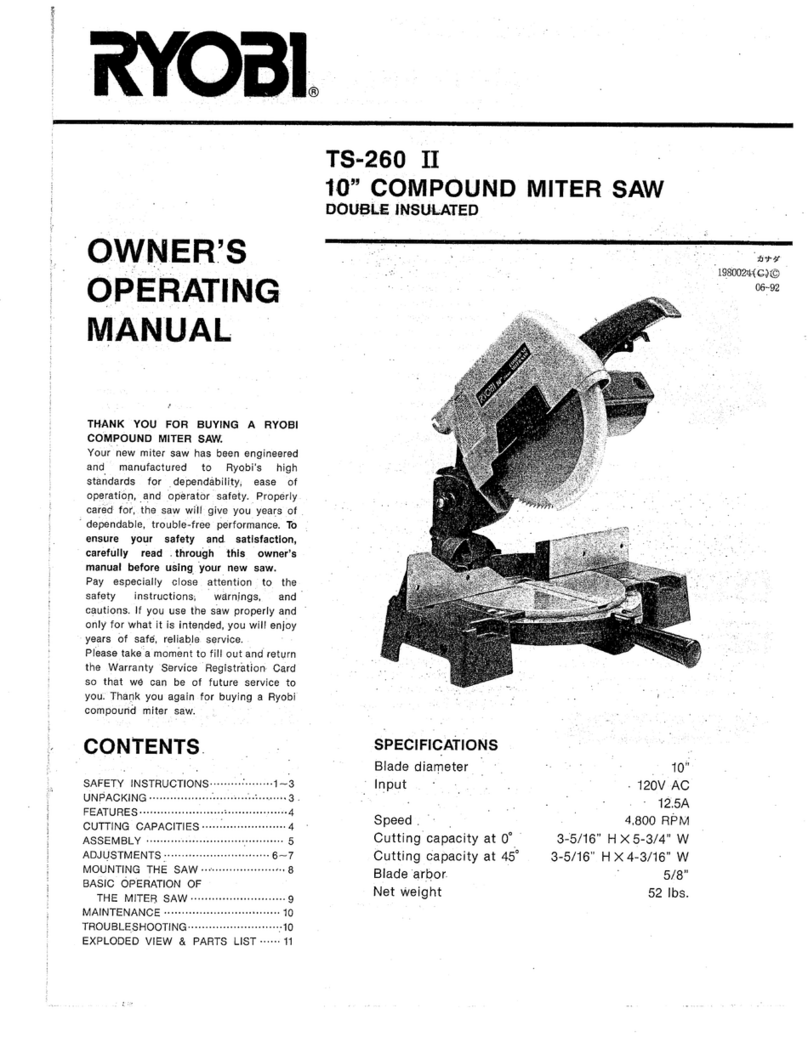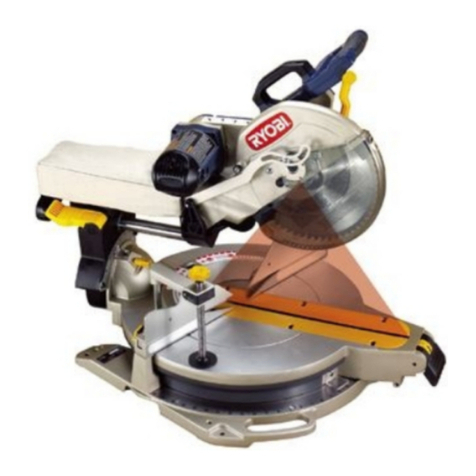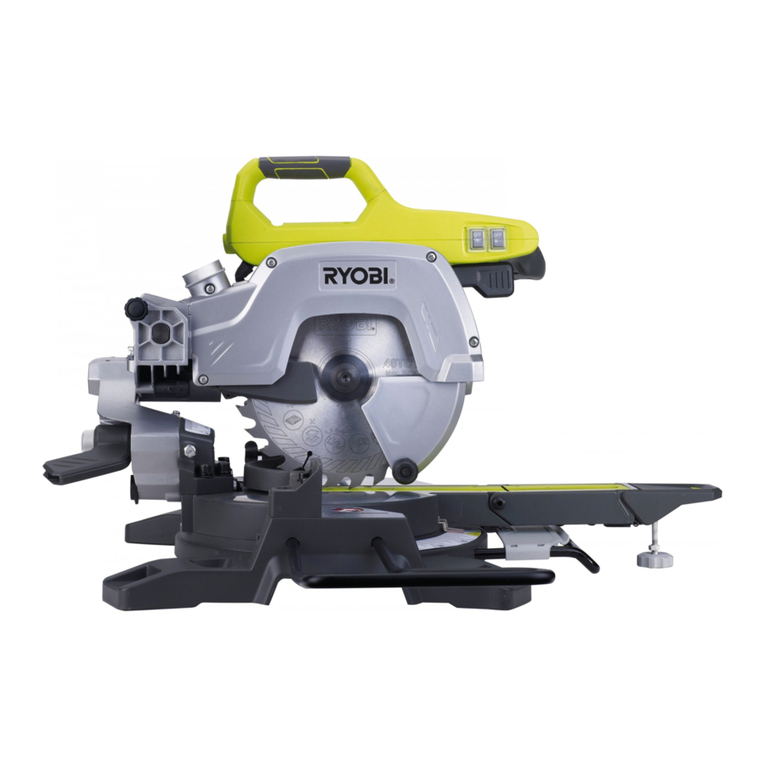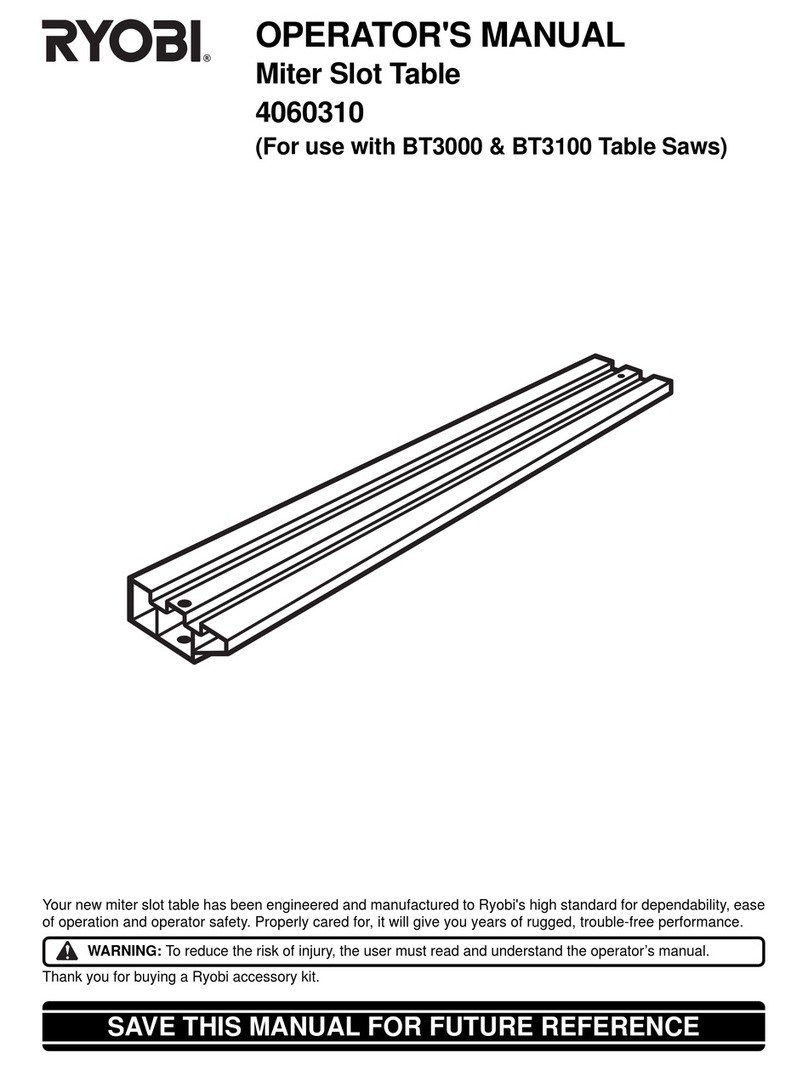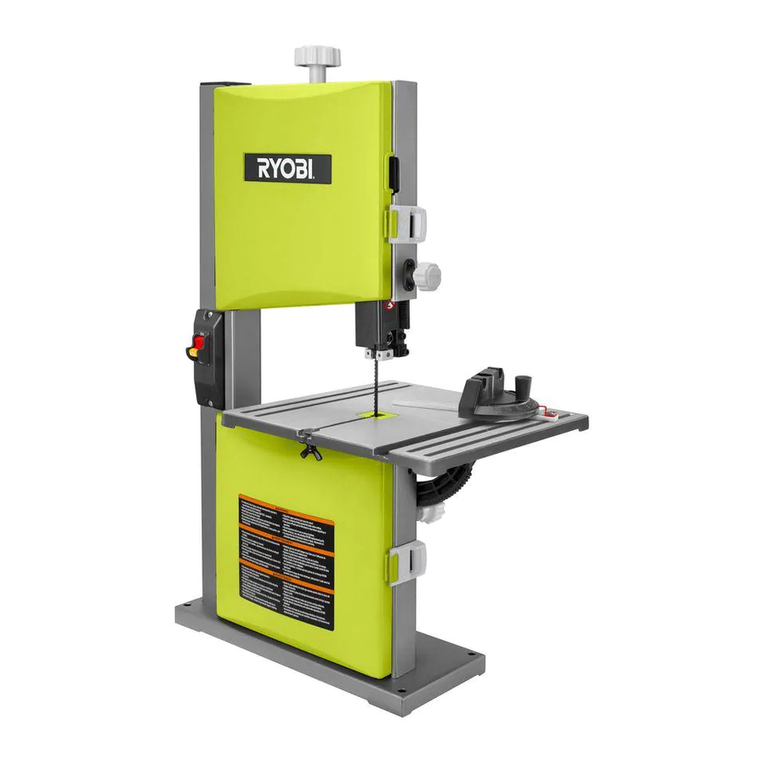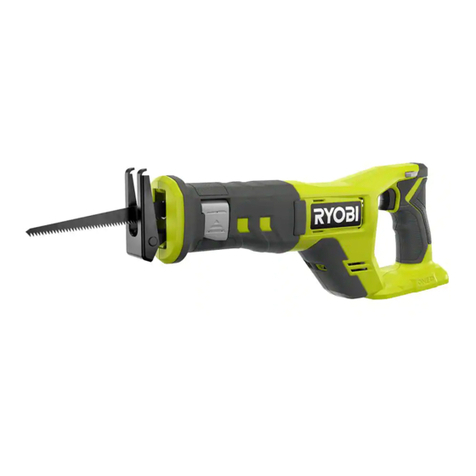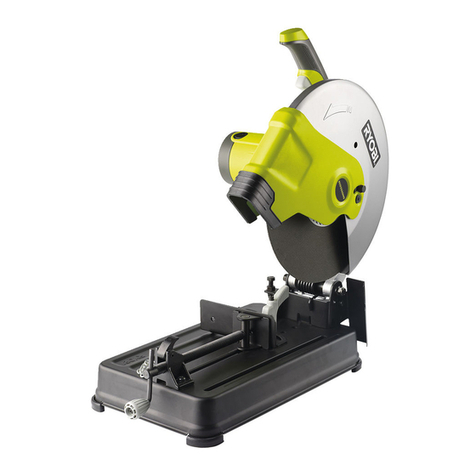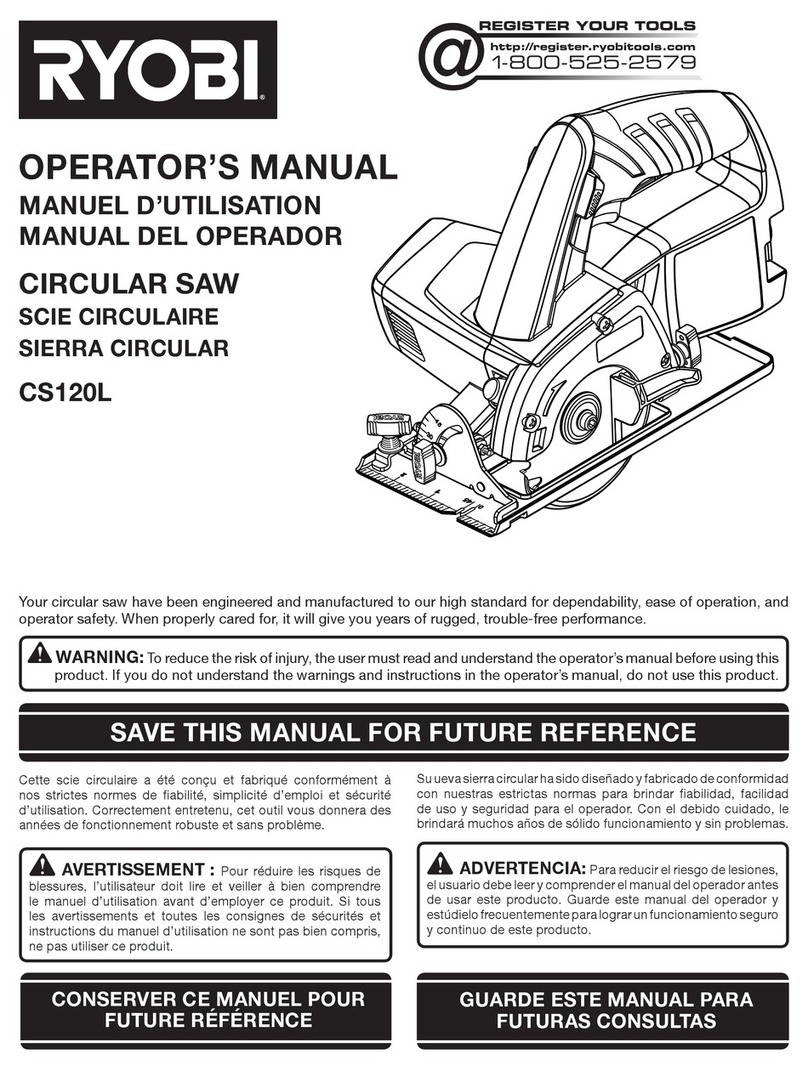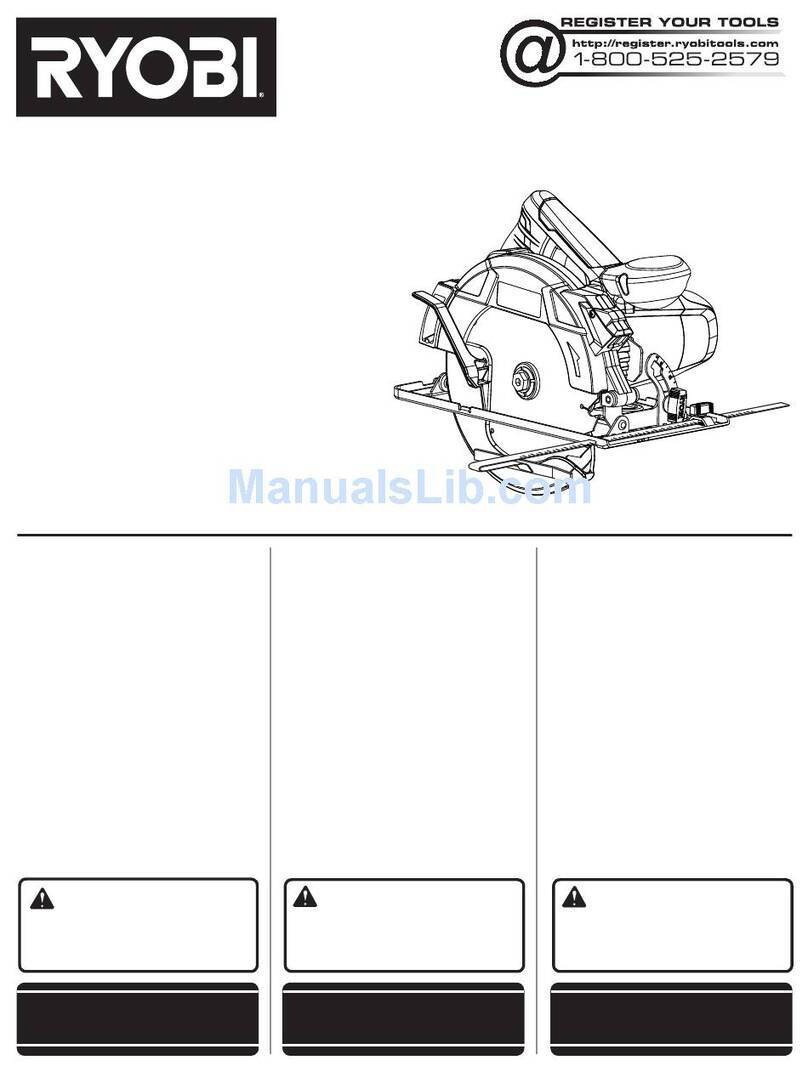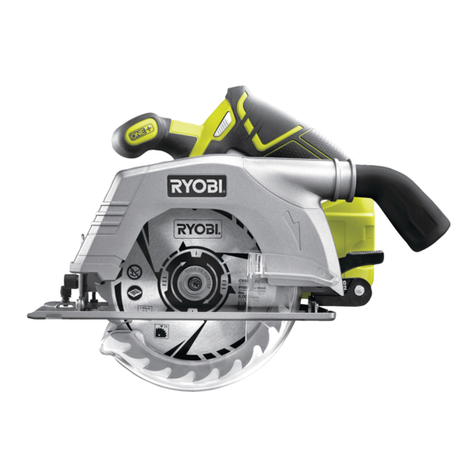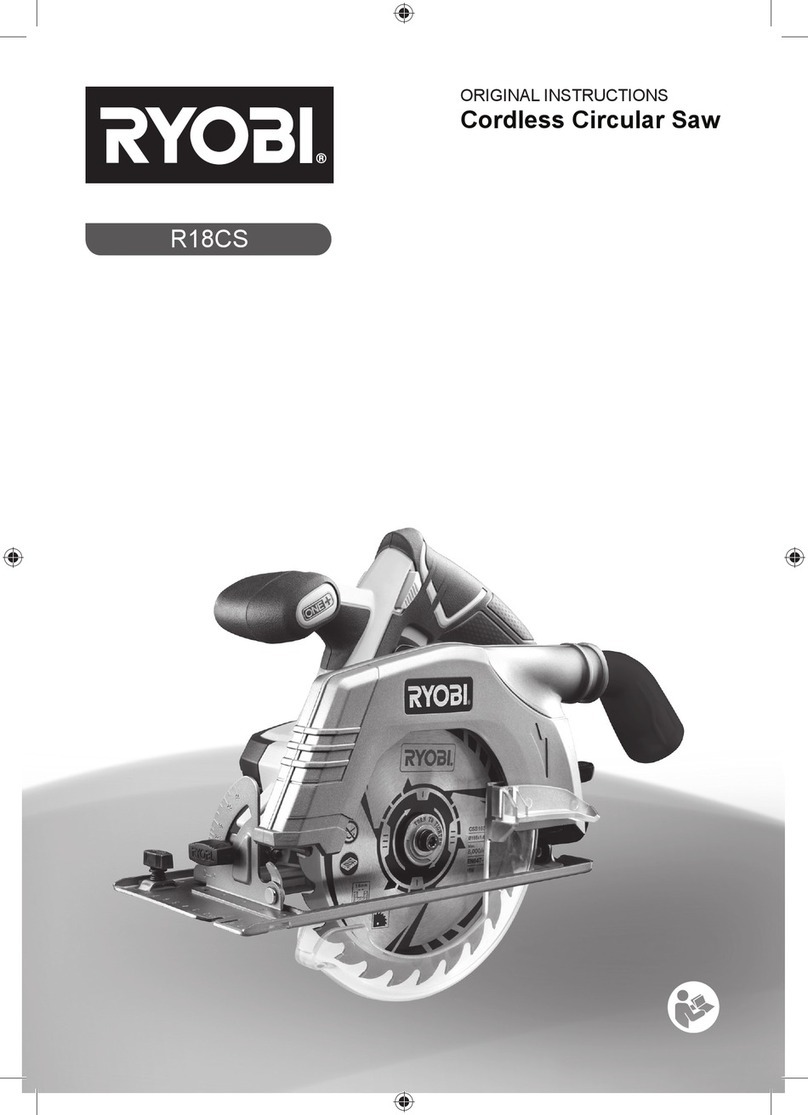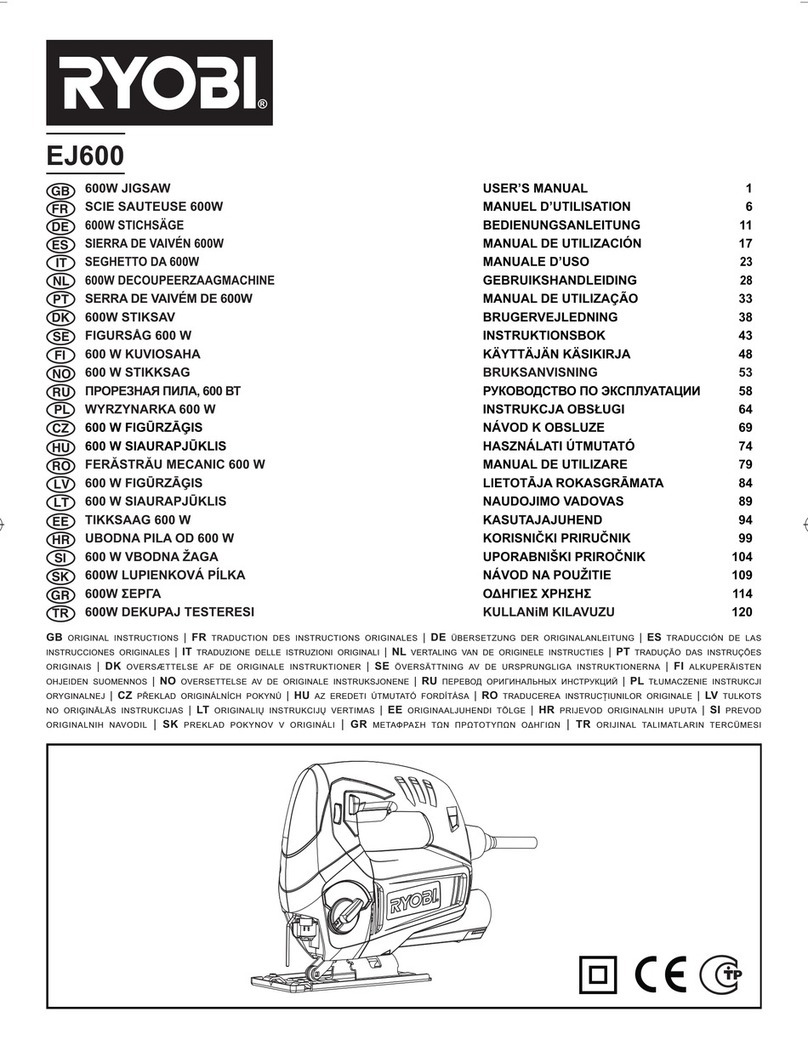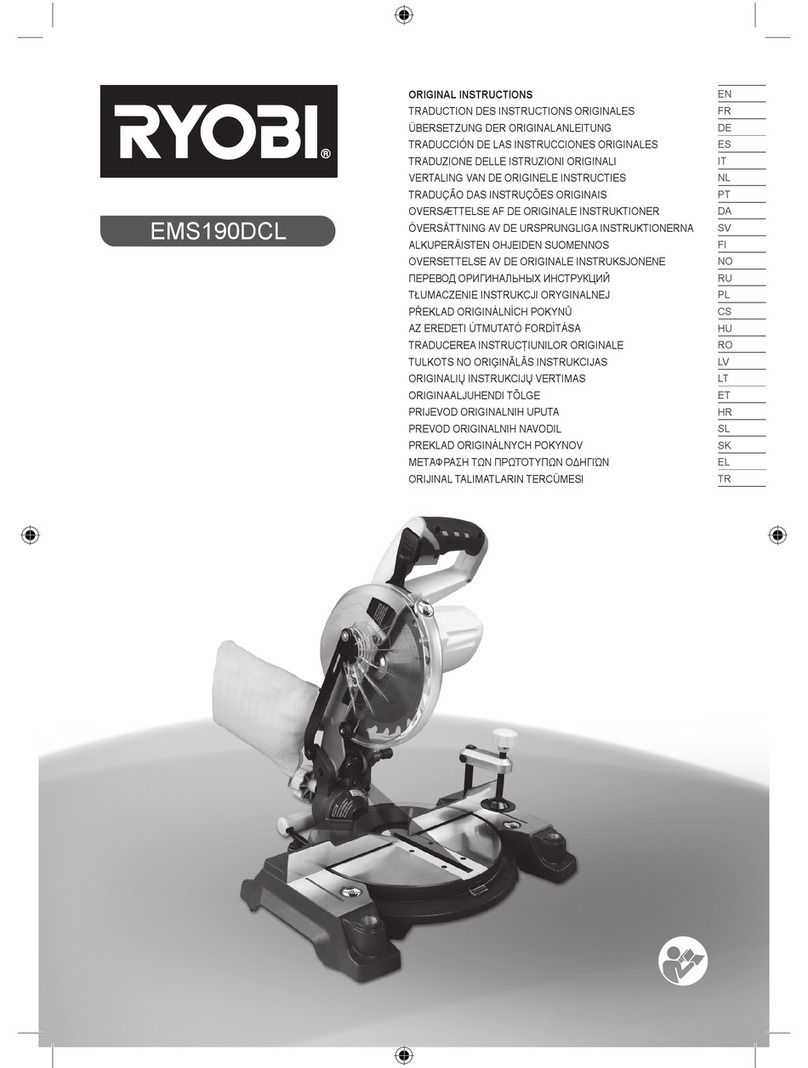
3
Original Instructions
Safety, performance, and dependability have been given top
priority in the design of your band saw.
INTENDED USE
The band saw is intended for straight line cutting, Scroll
cutting and circle cutting of wood and wood-made products.
The product is intended to be used only by adult operators
who have read the instruction manual and understand the
risks and hazards.
The product is to be used in dry conditions, with excellent
ambient lighting and adequate ventilation.
The product is intended for consumer use and should only
be used as described above and is not intended for any
other purpose.
GENERAL SAFETY WARNINGS
WARNING! When using electric tools, basic safety
precautions should always be followed to reduce the risk
of fire, electric shock and personal injury including the
following. Read all these instructions before attempting to
operate this product and save these instructions.
■Keep work area clear. Cluttered areas and benches
invite injuries.
■Consider work area environment. Do not expose tools
to rain. Do not use tools in damp or wet locations. Keep
work area well lit. Do not use tools in the presence of
flammable liquids or gases.
■Guard against electric shock. Avoid body contact with
earthed or grounded surfaces (e.g., pipes, radiators,
ranges, refrigerators).
■Keep other persons away. Do not let persons,
especially children, be involved in the work, touch the
tool or the extension cord, and keep them away from
the work area.
■Store idle tools. When not in use, tools should be
stored in a dry locked-up place, out of reach of children.
■Do not force the tool. It will do the job better and safer
at the rate for which it was intended.
■Use the right tool. Do not force small tools to do the job
of a heavy duty tool. Do not use tools for purposes not
intended, for example, do not use circular saws to cut
tree limbs or logs.
■Dress properly. Do not wear loose clothing or jewellery,
they can be caught in moving parts. Non-skid footwear is
recommended when working outdoors. Wear protective
hair covering to contain long hair.
■Use protective equipment. Use safety glasses. Use
face or dust mask if working operations create dust.
■Connect dust extraction equipment. If the tool is
provided for the connection of dust extraction and
collecting equipment, ensure these are connected and
properly used.
■Do not abuse the cord. Never yank the cord to
disconnect it from the socket. Keep the cord away from
heat, oil and sharp edges.
■Secure work. Where possible, use clamps or a vice to
hold the work. It is safer than using your hand.
■Do not overreach. Keep proper footing and balance at
all times.
■Maintain tools with care. Keep cutting tools sharp
and clean for better and safer performance. Follow
instruction for lubricating and changing accessories.
Inspect tool cords periodically and if damaged, have
them repaired by an authorized service facility. Inspect
extension cords periodically and replace if damaged.
Keep handles dry, clean and free from oil and grease.
■Disconnect tools. When not in use, before servicing
and when changing accessories such as blades, bits
and cutters, disconnect tools from the power supply.
■Remove adjusting keys and wrenches. Form the habit
of checking to see that keys and adjusting wrenches are
removed from the tool before turning it on.
■Avoid unintentional starting. Ensure switch is in “off”
position when plugging in.
■Use outdoor extension leads. When the tool is used
outdoors, use only extension cords intended for outdoor
use and so marked.
■Stay alert. Watch what you are doing, use common
sense and do not operate the tool when you are tired.
■Check damaged parts. Before further use of tool,
it should be carefully checked to determine that it will
operate properly and perform its intended function.
Check for alignment of moving parts, binding of moving
parts, breakage of parts, mounting and any other
conditions that may affect its operation. A guard or
other part that is damaged should be properly repaired
or replaced by an authorized service centre unless
otherwise indicated in this instruction manual. Have
defective switches replaced by an authorized service
centre. Do not use the tool if the switch does not turn
it on and off.
■Warning. The use of any accessory or attachment other
than the one recommended in this instruction manual
may present a risk of personal injury.
■Have your tool repaired by a qualified person. This
electric tool complies with the relevant safety rules.
Repairs should only be carried out by qualified persons
using original spare parts otherwise this may result in
considerable danger to the user.
BAND SAW SAFETY WARNINGS
■Firmly clamp or bolt the product to a work bench or leg
stand at approximately hip height.
■Never operate the product on the floor.
■Avoid awkward operations and hand positions where
a sudden slip could cause your hand to move into the
blade. Always make sure you have good balance.
■Allow the motor to come up to full speed before starting
a cut to avoid binding or stalling.
■Do not use the product if the switch does not turn it
on and off. Have defective switches replaced by an
authorised service centre.
■All repairs, whether electrical or mechanical, should be
made by a qualified service technician at an authorised
service centre.
■When servicing, use only identical replacement parts.
Use of any other parts may create a hazard or cause
product damage.
■Keep hands away from cutting area. Do not hand hold
pieces so small that your fingers go under the blade
guard. Do not reach underneath work or in the blade
cutting path with your hands and fingers for any reason.
■Never cut more than one piece at a time or stack more
than one workpiece on the saw table at a time.
■Do not feed the material too quickly. Do not force the
workpiece against the blade.
■Use only correct blades. Use the right blade size and
style for the material and the type of cut. Blade teeth
should point down toward the table.
■Always support large workpieces while cutting to
minimise the risk of blade pinching and kickback. The
product may slip or slide while cutting large or heavy
boards.
ENGLISH
EN
FR
DE
ES
IT
NL
PT
DA
SV
FI
NO
RU
PL
CS
HU
RO
LV
LT
ET
HR
SL
SK
BG
UK
TR
EL

